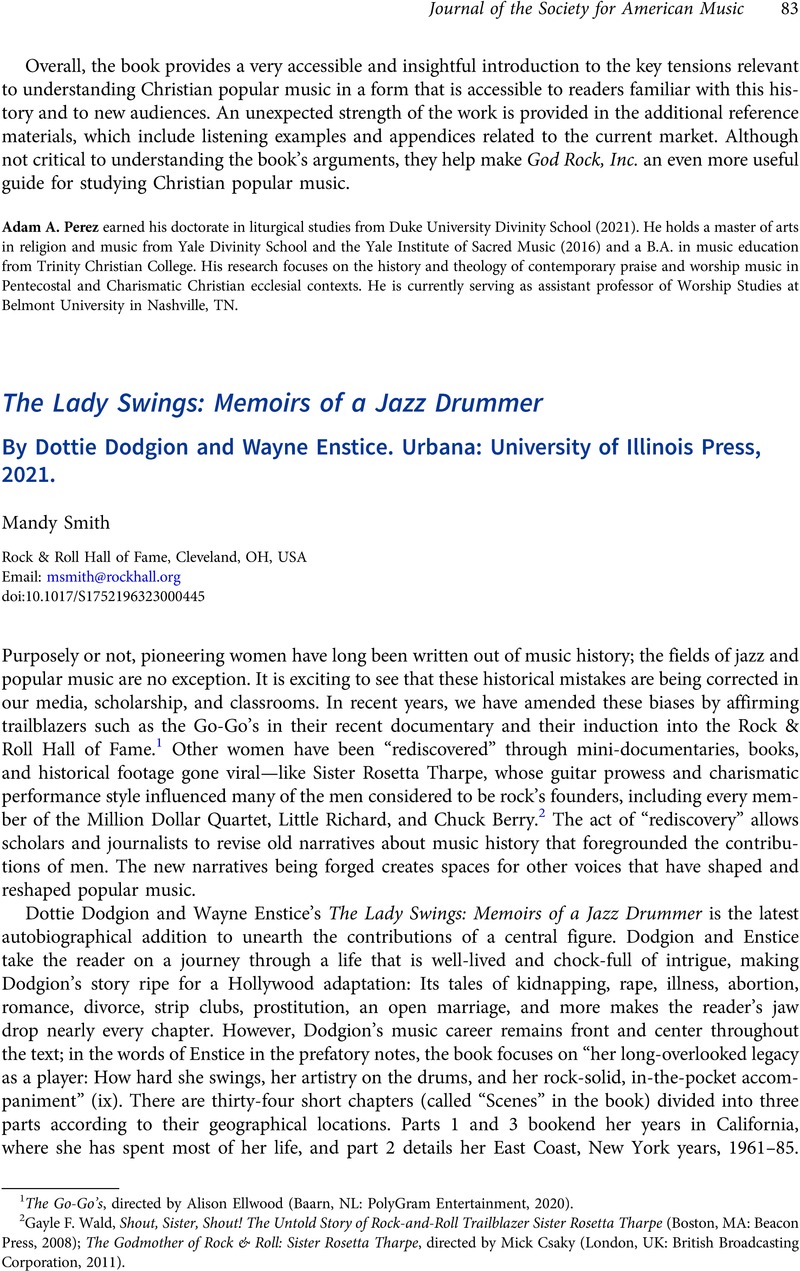No CrossRef data available.
Published online by Cambridge University Press: 26 February 2024

1 The Go-Go's, directed by Alison Ellwood (Baarn, NL: PolyGram Entertainment, 2020).
2 Wald, Gayle F., Shout, Sister, Shout! The Untold Story of Rock-and-Roll Trailblazer Sister Rosetta Tharpe (Boston, MA: Beacon Press, 2008)Google Scholar; The Godmother of Rock & Roll: Sister Rosetta Tharpe, directed by Csaky, Mick (London, UK: British Broadcasting Corporation, 2011)Google Scholar.